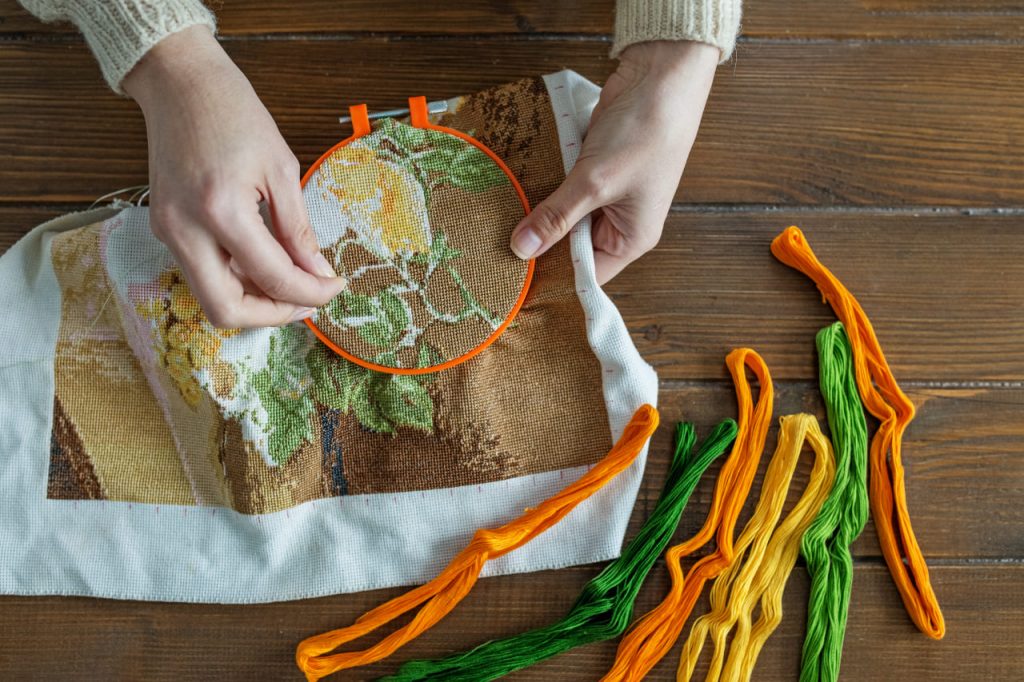Embroidery is a versatile and creative craft, and choosing the right materials is crucial to achieving the desired results. While there are endless fabric and thread options available, making the right selections will set the foundation for your project’s success. In this article, we’ll guide you through the process of choosing the best fabric and thread for your embroidery.
1. Selecting the Right Fabric for Your Embroidery
The fabric you choose can make a significant impact on the quality of your embroidery. Here are some popular options to consider, based on your project:
- Cotton: A soft, breathable fabric that is easy to work with and great for beginners. It holds stitches well and is perfect for most types of embroidery. Cotton is also available in various weights, making it a versatile option for different designs.
- Linen: This fabric is smooth, slightly textured, and strong. It has a more rustic appearance and works wonderfully for vintage or sophisticated designs. It’s a popular choice for fine, detailed embroidery.
- Aida Cloth: This fabric is often used in cross-stitch embroidery. It has a grid-like weave, which makes it easier to count stitches and create precise designs. Aida is perfect for beginners who want to work with structured patterns.
- Silk: Known for its luxurious feel and sheen, silk fabric adds elegance to any embroidery project. It’s ideal for creating detailed, delicate designs but requires more care and attention due to its smooth texture.
2. Choosing the Right Embroidery Thread
The thread you select will influence the overall appearance of your embroidery, and it’s essential to choose the right type. Here are the most common thread options:
- Embroidery Floss: This is the most popular thread for embroidery. Made of six strands of cotton, it can be split into different numbers of strands depending on the look you’re going for. Embroidery floss is available in a wide range of colors, making it ideal for vibrant designs.
- Silk Thread: Silk thread has a beautiful sheen and smooth texture, making it perfect for high-end, delicate embroidery projects. It’s a great choice if you’re working on a design that needs an extra touch of elegance.
- Metallic Thread: If you want to add a touch of sparkle to your embroidery, metallic threads are perfect. They are often used to add highlights, borders, or unique accents to designs. Keep in mind that metallic threads can be a bit tricky to work with, so it’s essential to practice before starting your project.
- Wool Thread: Wool is thicker than cotton and gives a more textured finish to your embroidery. It’s commonly used for designs that require a bit of dimension or when you want to create a more rustic or traditional look.
3. Thread Count and Thickness
When choosing your embroidery thread, it’s essential to pay attention to the thickness or “weight” of the thread. Some threads are thin and delicate, while others are thick and bold. The weight of the thread will affect the look and texture of your stitches. For example:
- Thin Threads: These are great for fine detail and creating smooth, delicate lines.
- Thicker Threads: These provide more texture and are ideal for bold stitches or larger areas that need filling.
4. Experimenting with Color
The color of your thread will greatly impact the final look of your embroidery. It’s essential to select colors that complement each other and fit the theme of your project. When working on a project with multiple colors, it’s a good idea to:
- Start with a color palette that includes a mix of light, medium, and dark shades to add depth and contrast to your design.
- Experiment with blending different shades to create smooth transitions or ombré effects in your embroidery.
5. Test Before You Start
Before diving into your main project, it’s always a good idea to test your fabric and thread choices on a small swatch. This will allow you to see how the fabric holds the stitches and how the thread looks on the fabric. It will also give you a chance to adjust the number of strands of thread you’re using if necessary.
Selecting the right fabric and thread for your embroidery projects is a crucial step in achieving beautiful, professional results. Take your time to experiment with different materials, and don’t be afraid to try new combinations to find what works best for you. With the right tools and materials, your embroidery will shine!

